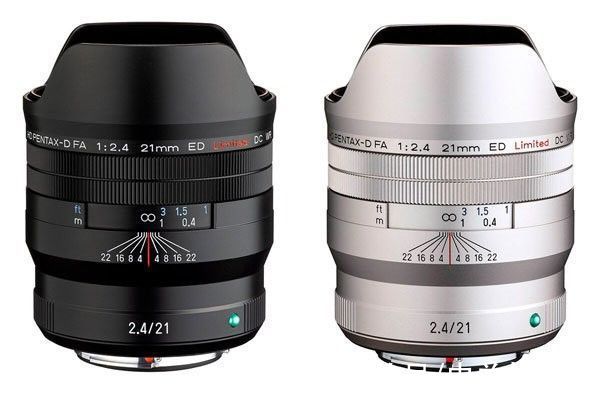и®ёеӨҡдәәдёҚе»әи®®еңЁз«һдәүжҖ§зј–зЁӢдёӯдҪҝз”ЁJava, еӣ дёәе®ғзҡ„иҫ“е…Ҙе’Ңиҫ“еҮәеҫҲж…ў, иҖҢдё”зЎ®е®һеҫҲж…ўгҖӮ
еңЁжң¬ж–Үдёӯ, жҲ‘们讨и®әдәҶдёҖдәӣи§ЈеҶійҡҫйўҳзҡ„ж–№жі•, иҜҰз»Ҷд»Ӣз»ҚJavaеҝ«йҖҹI/OпјҢ并е°ҶеҲӨеҶід»ҺTLEжӣҙж”№дёә(еӨ§еӨҡж•°жғ…еҶөдёӢ)ACгҖӮ
гҖҗJavaз«һдәүжҖ§зј–зЁӢпјҲJavaеҝ«йҖҹI/Oд»Ӣз»ҚпјүгҖ‘еҜ№дәҺд»ҘдёӢжүҖжңүзЁӢеәҸ
иҫ“е…ҘеҰӮдёӢпјҡ
7 3
1
51
966369
7
9
999996
11иҫ“еҮәеҰӮдёӢпјҡ
4Scannerзұ»вҖ“(з®ҖеҚ•, жү“еӯ—е°‘, дҪҶдёҚе»әи®®йқһеёёж…ў, иҜ·еҸӮйҳ…
иҝҷдёӘ(з”ұдәҺиҝҗиЎҢзј“ж…ў)пјҡеңЁеӨ§еӨҡж•°жғ…еҶөдёӢ, жҲ‘们еңЁдҪҝз”Ёжү«жҸҸд»Әзұ»ж—¶дјҡиҺ·еҫ—TLEгҖӮе®ғдҪҝз”ЁеҶ…зҪ®зҡ„nextInt(), nextLong(), nextDoubleж–№жі•еңЁдҪҝз”Ёиҫ“е…ҘжөҒеҗҜеҠЁжү«жҸҸеҷЁеҜ№иұЎеҗҺиҜ»еҸ–жүҖйңҖзҡ„еҜ№иұЎ(дҫӢеҰӮSystem.in)гҖӮд»ҘдёӢзЁӢеәҸеҫҲеӨҡж—¶еҖҷйғҪи¶…иҝҮдәҶж—¶й—ҙйҷҗеҲ¶, еӣ жӯӨжІЎжңүеӨӘеӨ§з”ЁеӨ„гҖӮ
//Working program using Scanner
import java.io.BufferedReader;
import java.io.InputStreamReader;
import java.util.Scanner;
public class Main
{
public static void main(String[] args)
{
Scanner s = new Scanner(System.in);
int n = s.nextInt();
int k = s.nextInt();
int count = 0 ;
while (n-->
0 )
{
int x = s.nextInt();
if (x%k == 0 )
count++;
}
System.out.println(count);
}
}зј“еҶІиҜ»еҸ–еҷЁ - Javaзҡ„еҝ«йҖҹI/O
(еҝ«йҖҹ, дҪҶдёҚе»әи®®иҝҷж ·еҒҡ, еӣ дёәе®ғйңҖиҰҒеӨ§йҮҸй”®е…Ҙж“ҚдҪң)пјҡJava.io.BufferedReaderзұ»д»Һеӯ—з¬Ұиҫ“е…ҘжөҒдёӯиҜ»еҸ–ж–Үжң¬, зј“еҶІеӯ—з¬Ұ, д»Ҙдҫҝжңүж•ҲиҜ»еҸ–еӯ—з¬Ұ, ж•°з»„е’ҢиЎҢгҖӮдҪҝз”Ёиҝҷз§Қж–№жі•, жҲ‘们жҜҸж¬ЎйғҪеҝ…йЎ»и§ЈжһҗжүҖйңҖзұ»еһӢзҡ„еҖјгҖӮз”ұдәҺдҪҝз”ЁStringtokenizer, еӣ жӯӨд»ҺеҚ•иЎҢиҜ»еҸ–еӨҡдёӘеҚ•иҜҚдјҡеўһеҠ е…¶еӨҚжқӮжҖ§, еӣ жӯӨдёҚе»әи®®иҝҷж ·еҒҡгҖӮеӨ§зәҰ0.89 sзҡ„иҝҗиЎҢж—¶й—ҙе·Іиў«жҺҘеҸ—, дҪҶд»Қ然еҸҜд»ҘзңӢеҲ°, е®ғйңҖиҰҒеҫҲеӨҡж¬Ўй”®е…Ҙ, еӣ жӯӨе»әи®®дҪҝз”Ёж–№жі•3гҖӮ
//Working program using BufferedReader
import java.io.BufferedReader;
import java.io.IOException;
import java.io.InputStreamReader;
import java.util.StringTokenizer;
public class Main
{
public static void main(String[] args) throws IOException
{BufferedReader br = new BufferedReader(
new InputStreamReader(System.in));
StringTokenizer st = new StringTokenizer(br.readLine());
int n = Integer.parseInt(st.nextToken());
int k = Integer.parseInt(st.nextToken());
int count = 0 ;
while (n-->
0 )
{
int x = Integer.parseInt(br.readLine());
if (x%k == 0 )
count++;
}
System.out.println(count);
}
}Javaзҡ„еҝ«йҖҹI/O - з”ЁжҲ·е®ҡд№үзҡ„FastReaderзұ»
(дҪҝз”ЁbufferedReaderе’ҢStringTokenizer)пјҡжӯӨж–№жі•еҲ©з”ЁBufferedReaderе’ҢStringTokenizerзҡ„ж—¶й—ҙдјҳеҠҝд»ҘеҸҠз”ЁжҲ·е®ҡд№үзҡ„ж–№жі•зҡ„дјҳеҠҝ, д»ҘеҮҸе°‘й”®е…Ҙж¬Ўж•°, д»ҺиҖҢеҠ еҝ«иҫ“е…ҘйҖҹеәҰгҖӮиҝҷе°ҶеңЁ1.23 sзҡ„ж—¶й—ҙеҶ…иў«жҺҘеҸ—, 并且жӯӨж–№жі•жҳҜ
йқһеёёжҺЁиҚҗ
еӣ дёәе®ғе®№жҳ“и®°дҪҸ, 并且йҖҹеәҰи¶ід»Ҙж»Ўи¶із«һдәүжҖ§зј–з ҒдёӯеӨ§еӨҡж•°й—®йўҳзҡ„йңҖжұӮгҖӮ
//Working program with FastReader
import java.io.BufferedReader;
import java.io.IOException;
import java.io.InputStreamReader;
import java.util.Scanner;
import java.util.StringTokenizer;
public class Main
{
static class FastReader
{
BufferedReader br;
StringTokenizer st;
public FastReader()
{
br = new BufferedReader( new
InputStreamReader(System.in));
}String next()
{
while (st == null || !st.hasMoreElements())
{
try
{
st = new StringTokenizer(br.readLine());
}
catch (IOExceptione)
{
e.printStackTrace();
}
}
return st.nextToken();
}int nextInt()
{
return Integer.parseInt(next());
}long nextLong()
{
return Long.parseLong(next());
}double nextDouble()
{
return Double.parseDouble(next());
}String nextLine()
{
String str = "" ;
try
{
str = br.readLine();
}
catch (IOException e)
{
e.printStackTrace();
}
return str;
}
}public static void main(String[] args)
{
FastReader s= new FastReader();
int n = s.nextInt();
int k = s.nextInt();
int count = 0 ;
while (n-->
0 )
{
int x = s.nextInt();
if (x%k == 0 )
count++;
}
System.out.println(count);
}
}Javaеҝ«йҖҹI/O - дҪҝз”ЁReaderзұ»пјҡиҝҳжңүеҸҰдёҖз§Қеҝ«йҖҹи§ЈеҶій—®йўҳзҡ„ж–№жі•, жҲ‘жғіиҜҙжҳҜжңҖеҝ«зҡ„ж–№жі•, дҪҶдёҚе»әи®®иҝҷж ·еҒҡ, еӣ дёәе®ғеңЁжү§иЎҢиҝҮзЁӢдёӯйңҖиҰҒйқһеёёйә»зғҰзҡ„ж–№жі•гҖӮе®ғдҪҝз”ЁinputDataStreamиҜ»еҸ–ж•°жҚ®жөҒ, 并дҪҝз”Ёread()ж–№жі•е’ҢnextInt()ж–№жі•иҺ·еҸ–иҫ“е…ҘгҖӮеҲ°зӣ®еүҚдёәжӯў, иҝҷжҳҜжңҖеҝ«зҡ„иҫ“е…Ҙж–№жі•, дҪҶеҫҲйҡҫи®°дҪҸ, иҖҢдё”ж–№жі•з№ҒзҗҗгҖӮдёӢйқўжҳҜдҪҝз”ЁжӯӨж–№жі•зҡ„зӨәдҫӢзЁӢеәҸгҖӮ
д»ӨдәәжғҠ讶зҡ„ж—¶й—ҙд»…дёә0.28 s, иҝҷиў«жҺҘеҸ—гҖӮе°Ҫз®ЎиҝҷжҳҜйқһеёёеҝ«зҡ„, дҪҶжҳҜжҳҫ然иҝҷдёҚжҳҜдёҖдёӘе®№жҳ“и®°дҪҸзҡ„ж–№жі•гҖӮ
//Working program using Reader Class
import java.io.DataInputStream;
import java.io.FileInputStream;
import java.io.IOException;
import java.io.InputStreamReader;
import java.util.Scanner;
import java.util.StringTokenizer;
public class Main
{
static class Reader
{
final private int BUFFER_SIZE = 1 <
<
16 ;
private DataInputStream din;
private byte [] buffer;
private int bufferPointer, bytesRead;
public Reader()
{
din = new DataInputStream(System.in);
buffer = new byte [BUFFER_SIZE];
bufferPointer = bytesRead = 0 ;
}public Reader(String file_name) throws IOException
{
din = new DataInputStream( new FileInputStream(file_name));
buffer = new byte [BUFFER_SIZE];
bufferPointer = bytesRead = 0 ;
}public String readLine() throws IOException
{
byte [] buf = new byte [ 64 ];
//line length
int cnt = 0 , c;
while ((c = read()) != - 1 )
{
if (c == '\n' )
break ;
buf[cnt++] = ( byte ) c;
}
return new String(buf, 0 , cnt);
}public int nextInt() throws IOException
{
int ret = 0 ;
byte c = read();
while (c <
= ' ' )
c = read();
boolean neg = (c == '-' );
if (neg)
c = read();
do
{
ret = ret * 10 + c - '0' ;
}while ((c = read())>
= '0' &
&
c <
= '9' );
if (neg)
return -ret;
return ret;
}public long nextLong() throws IOException
{
long ret = 0 ;
byte c = read();
while (c <
= ' ' )
c = read();
boolean neg = (c == '-' );
if (neg)
c = read();
do {
ret = ret * 10 + c - '0' ;
}
while ((c = read())>
= '0' &
&
c <
= '9' );
if (neg)
return -ret;
return ret;
}public double nextDouble() throws IOException
{
double ret = 0 , div = 1 ;
byte c = read();
while (c <
= ' ' )
c = read();
boolean neg = (c == '-' );
if (neg)
c = read();
do {
ret = ret * 10 + c - '0' ;
}
while ((c = read())>
= '0' &
&
c <
= '9' );
if (c == '.' )
{
while ((c = read())>
= '0' &
&
c <
= '9' )
{
ret += (c - '0' ) /(div *= 10 );
}
}if (neg)
return -ret;
return ret;
}private void fillBuffer() throws IOException
{
bytesRead = din.read(buffer, bufferPointer = 0 , BUFFER_SIZE);
if (bytesRead == - 1 )
buffer[ 0 ] = - 1 ;
}private byte read() throws IOException
{
if (bufferPointer == bytesRead)
fillBuffer();
return buffer[bufferPointer++];
}public void close() throws IOException
{
if (din == null )
return ;
din.close();
}
}public static void main(String[] args) throws IOException
{
Reader s= new Reader();
int n = s.nextInt();
int k = s.nextInt();
int count= 0 ;
while (n-->
0 )
{
int x = s.nextInt();
if (x%k == 0 )
count++;
}
System.out.println(count);
}
}е»әи®®йҳ…иҜ»пјҡ
е·ЁеӨ§зҡ„иҫ“е…ҘжөӢиҜ• ж—ЁеңЁжЈҖжҹҘдҪ зҡ„иҜӯиЁҖзҡ„еҝ«йҖҹиҫ“е…ҘеӨ„зҗҶгҖӮSPOJи®°еҪ•дәҶжүҖжңүзЁӢеәҸзҡ„ж—¶й—ҙгҖӮ
д»ҘдёҠе°ұжҳҜз«һдәүжҖ§зј–зЁӢзҡ„Javaеҝ«йҖҹI/Oзҡ„е…ЁйғЁеҶ…е®№пјҢеҰӮжһңеҸ‘зҺ°д»»дҪ•дёҚжӯЈзЎ®зҡ„ең°ж–№, жҲ–иҖ…жғіеҲҶдә«жңүе…ідёҠиҝ°дё»йўҳзҡ„жӣҙеӨҡдҝЎжҒҜ, иҜ·еҸ‘иЎЁиҜ„и®әгҖӮ














